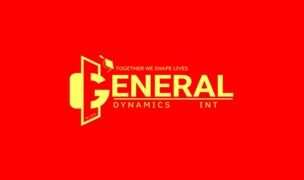Temporary structures are becoming quite common, especially warehouses and commercial residences. These structures come with plenty of benefits over conventional brick-and-mortar buildings. The structures can also be customized to add extra stuff such as energy-saving features.
The selection of options available in the temporary buildings market is also very wide. You can get industrial tents, steel frame buildings, or temporary steel structures. However, you will need to review factors such as price and usage when looking for the right temporary structure.
This guide will highlight the main benefits of temporary structures. You will also find tips to consider when choosing a temporary structure.
Main Benefits of Temporary Buildings
One of the main pros of temporary structures is that they are cheap to set up. The materials used to set up these structures are prefabricated and cheaper. Also, setting up the design is quite quick, meaning you will spend less on labour costs.
Some temporary buildings can be set up on any surface. You don’t have to spend extra cash building a concrete slab. For example, industrial tents can be set up on any surface provided that it is flat.
Home maintenance works can be costly. However, temporary structures are cheap to maintain. Most of the materials used to build temporary structures are high-quality and capable of withstanding harsh weather conditions. So, you may find yourself going for years before needing to replace the roof or repaint the walls.
Temporary buildings offer excellent floor and head space. The structures can go as high as 12 meters. The structures also don’t have any support beams running through the middle of the structure. This is quite a plus for using the structure as a warehouse where you want storage space and an obstacle-free area to move a forklift or truck.
Another benefit of temporary buildings is that they are flexible. The structures can be used to set up warehouses, indoor arenas, or even classrooms. Extra customization can be added to make the structure habitable. It is also very easy to add extensions to temporary structures.
Temporary structures are also portable, which is a plus for businesses that operate on leased land. The structure can be dismantled and the materials moved to the new location. The quick set-up time also means that the prefabricated materials can be used to rebuild the structure.
Most temporary structures come with energy-saving features. You can opt for a clear PVC roof that lets in natural light during the day. You can also have large windows and doors to allow air circulation during hot seasons. Extra padding can be added to the walls for temporary steel buildings. You can check this website for more information on customizations.
Tips to Consider When Choosing a Temporary Structure
It would be best to consider a couple of factors when choosing a temporary structure. The first thing is your budget. How much are you planning to spend? Industrial tents are the cheapest type of temporary structure. You can also lease one if you only use it for a short time.
The recent climate changes in the world have made it necessary for businesses to go for energy-efficient structures that will utilize light from natural sources.
You need to consult with the relevant authorities in your area before setting up your temporary structure. The process of applying for permits can affect the project’s progress. The planning permission can take between eight to 12 weeks before approval.
Wrapping Up
Temporary buildings are very versatile. For short-term usage, we recommend leasing industrial tents. While you’re at it, ensure that you consult a construction expert to find out if you need planning permission first.




























